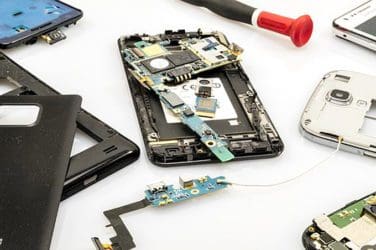words Al Woods
Owning a car involves more than just making a purchase; it also includes responsibilities like registration to comply with the law. This manual will guide you through the process of registering a car in the United States, providing clear, step-by-step instructions to make the process as smooth as possible. Whether you’re a first-time car owner or you’ve just moved to a new state, this guide is here to help you navigate the necessities and get you on the road legally and safely.
Get A VIN Verification
The first step in the process of registering your car involves getting a Vehicle Identification Number (VIN) verification. A VIN is a unique code assigned to every vehicle, serving as its “fingerprints.” To get a VIN verification, bring your vehicle to a local law enforcement agency, a licensed VIN verifier, or a Department of Motor Vehicles (DMV) inspector. You need to do this locally whether that be a Los Angeles VIN verification, or a New York one. This is to ensure that the VIN on your car matches the one assigned by the manufacturer. Once verified, you will receive a completed Verification of Vehicle (REG 31) form.
Insurance Requirements for Vehicle Registration
The next crucial step in the car registration process is ensuring that your vehicle is properly insured. In most states, it is mandatory to have valid auto insurance before you can register your car. The specific coverage requirements may vary from state to state but typically include liability insurance to cover the costs associated with property damage or physical injury in the event of an accident.
It’s crucial to keep your insurance card or a copy of your insurance policy in your car at all times as proof of insurance. When you go to register your car at the DMV, you’ll need to provide this proof of insurance. You will be unable to complete the signup procedure without it.
Driving without valid insurance can lead to significant fines, loss of your driving privileges, and even jail time in some cases. Therefore, it’s essential to prioritize obtaining and maintaining adequate insurance coverage for your car.
Vehicle Inspection: Ensuring Roadworthiness
The third key step in the process of registering your car is the vehicle inspection. This is to ensure that your vehicle is safe and roadworthy and that it adheres to the environmental standards and regulations set by the government. In many states, it’s mandatory to pass this inspection before you can finish registering your car.
Vehicle inspections typically consist of two parts: the safety inspection and the emissions inspection. The safety inspection includes checking essential vehicle components like brakes, tires, lights, and windshield wipers to ensure they’re in good working order. The emissions inspection, on the other hand, verifies that your vehicle’s emissions are within the state’s allowable limits.
If your vehicle fails either part of the inspection, you will need to have the necessary repairs made and then retest the car. Once your vehicle passes the inspection, you’ll receive an inspection sticker or certificate, which you’ll need to present when you continue with the registration process. Remember, maintaining your car’s roadworthiness is not just a legal requirement but also a crucial element in ensuring your safety and the safety of others on the road.
Completing the Initial Registration Application
The fourth step in registering your car is to complete the initial registration application. This process can generally be started online at your state’s Department of Motor Vehicles (DMV) website. You will need to provide information such as your vehicle’s make, model, and year, your VIN, and details about your auto insurance coverage. You may also need to enter your personal information, including your full name, address, and driver’s license number.
Ensure all the information you provide is accurate and up-to-date, as any errors could delay your application. While some states offer an entirely online application process, others may require you to bring the completed application to a local DMV office. Always check the specific requirements for your state.
Once your application has been submitted and the necessary fees paid, the DMV will process your application. If all the information is in order, you’ll receive your registration certificate and license plates or stickers. Attach the plates to your vehicle and keep the registration certificate and proof of insurance in your car at all times. With these steps completed, you are now legally registered to drive your car on public roads.
In conclusion, registering your car is an essential part of vehicle ownership. Be sure to follow these steps carefully, and always keep up-to-date with the specific requirements in your state. With a properly registered and insured car, you can enjoy driving safely and legally on the road. So start enjoying the freedom of owning your car today!





















